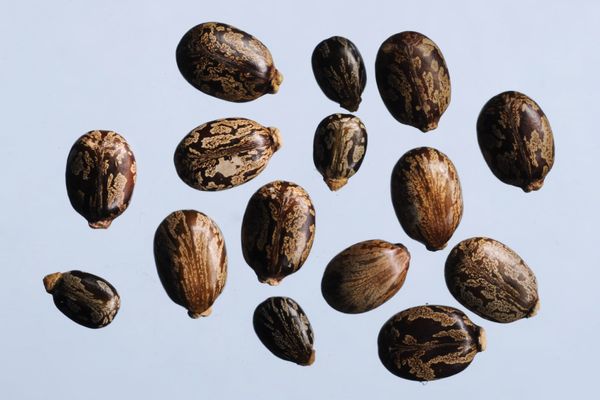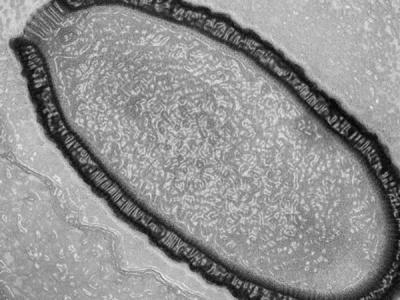Ricin Back in the Headlines: What Is It?
Two poisoned-laced letters-one sent to President Barack Obama and one to Senator Roger Wicker of Mississippi-have put the toxin ricin in the headlines this week.
It's not the first time the toxin has made headlines. In 1978, Georgi Markov, a Bulgarian dissident, was assassinated in London when a man approached and jabbed him with an umbrella modified to fire a ricin pellet.
Ricin is a naturally occurring toxin that comes from the castor bean, Ricinus communis, an ornamental plant introduced from India. According to Casarett and Doull's Toxicology: The Basic Science of Poisons, the fatal dose for a child can be five to six seeds. The fatal dose for an adult is 20 seeds; however, because the toxin protein is largely destroyed by the intestine, the mortality rate from swallowing castor beans is low-less than 10 percent.
What about ricin that has been modified into a powder or other form as an agent of biological terrorism-as with the toxin-laced letters? "It's high among agents of concern because of its toxicity, but there is limited data regarding inhalation of the toxin as well as skin exposure," says Dr. Dan Sosin, deputy director and chief medical officer of the Office of Public Health Preparedness and Response at the Centers for Disease Control and Prevention (CDC).
The seeds of the castor oil plant contain ricin—one of the strongest poisons found in nature.
This makes these letters quite different from the anthrax-laced letters sent through the U.S. Postal Service that killed five in 2001. "Anthrax is a spore, which is an infectious agent," Sosin says. "The toxin in the castor bean is not as accessible to absorption."
Which suggests, he adds, that the ricin letters carry a low probability of risk for anyone in the mail-handling chain. "But this is work the FBI is doing-testing to determine how refined the ricin is. It's all developing news."
Here is a primer on ricin, adapted from information on the CDC website.
How toxic is ricin? How do people get sick from it?
Ricin works by preventing cells from making the proteins they need. Without the proteins, cells die. Eventually this is harmful to the whole body and may cause death. As with most chemicals, whether or not a person becomes ill after exposure to ricin depends on how much ricin the person was exposed to, how long the exposure lasted, what the exposure method was (inhalation, ingestion, or injection).
How is one exposed to ricin?
Exposure to ricin comes about by ingesting or inhaling material containing ricin. In a few rare cases, injections of ricin have led to poisoning.
What are the signs and symptoms of ricin poisoning?
If ricin is ingested, initial symptoms typically occur in less than 6-12 hours. These are most likely to affect the gastrointestinal system and include nausea, vomiting, and abdominal pain. The symptoms of ricin poisoning can rapidly progress to include severe dehydration and kidney and liver problems. If ricin is inhaled, initial symptoms may occur as early as 4-6 hours after exposure, but serious symptoms could also occur as late as 24 hours after exposure. The initial symptoms are likely to affect the respiratory system and can include difficulty breathing, shortness of breath, chest tightness, and cough. Death from ricin poisoning can take place within 36-72 hours of exposure, depending on the route of exposure and the dose.
Is there an antidote for ricin?
There is none. Because of that, the most important factor is avoiding exposure in the first place.
Have many people died after being exposed to ricin?
Several deaths have resulted after a victim was injected with ricin. People have been poisoned with ricin from eating castor beans, but most cases of eating castor beans do not result in poisoning because it is difficult for the digestive system to release the ricin from the beans. Also, ricin is not as well absorbed through the gastrointestinal tract, compared with injection or inhalation.
What tests are used to detect ricin?
There are several, including tests on environmental samples of suspicious materials and tests on human body fluids. Public health laboratories that are part of the CDC's Laboratory Response Network (LRN) use rapid-detection tests for environmental samples. Some LRN laboratories can test clinical urine samples for the presence of ricinine, an indicator of exposure.
What do the results of these tests tell us?
The rapid tests indicate whether components of the castor bean are present in the environmental sample and whether ricin toxin is present. If both yield a "positive" result, then the presence of ricin can be confirmed.
What is the difference between a preliminary test and a confirmatory test?
A preliminary test result-such as a positive finding for ricin components-must be confirmed by a second LRN test, which detects ricin toxin. The ricin toxin test is considered the best test for determining the presence of ricin. A positive result for ricin components can be used in public health decision making while officials wait for confirmatory results from the toxin test.
Cathy Newman
National Geographic News
Published April 17, 2013












